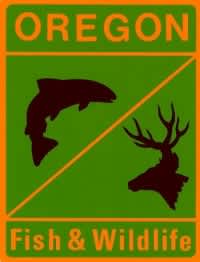Oregon DFW Extends Trask Chinook Season, Adds Anti-Snagging Rules
OutdoorHub 05.30.12

With a strong early showing of hatchery spring chinook, the Oregon Department of Fish and Wildlife has decided to extend the fishing season at the “hatchery hole” on the Trask River through June 30.
In addition to the season extension, ODFW is implementing new gear restrictions on a section of the Trask River and Three Rivers (which is a tributary of the Nestucca River) designed to reduce snagging.
The hatchery hole is a popular section of the Trask River located 200 feet above and 900 feet below its confluence with Gold Creek. This area was originally scheduled to close to fishing on May 31. However, ODFW recommended extending the season by 30 days because biologists are now confident that sufficient hatchery spring chinook will be available to meet the Trask Hatchery’s brood stock needs for the year.
“Angling for spring chinook in the Tillamook Bay system has been good during the early part of the run this year,” said Chris Knutsen, district fish biologist for ODFW’s North Coast Watershed. “The Trask has been especially productive considering that the run is still in the early stages. All indications are that the hatchery spring chinook return is large enough to support this additional harvest opportunity.”
Under new anti-snagging rules adopted for the Trask River from the Cedar Creek wooden boat slide to the Lorens Drift wooden boat slide, gear is restricted to fly and bobber angling only. Bobber fishing is restricted to rigs with a bobber, single point hook, and leader no more than 36 inches in length. Fly angling is as defined in the 2012 angling regulation booklet. On Three Rivers, gear is restricted to single point hooks with a gap no greater than 3/8ths inch (approximately size 2) and leaders no longer than 36-inches. The gear restrictions on the Trask and Three Rivers are effective beginning June 1 and last until spring salmon angling closes in each area.
These gear restrictions are necessary, according to Knutsen, to discourage the illegal practice of “snagging” or “flossing” fish that concentrate in these areas. Flossing is the practice of drifting line into the gaping mouth of a fish holding in the river current. Large hooks attached to the leader easily hook the fish on the outside of the jaw. ODFW biologists and Oregon State Police have noticed an increase in these illegal fishing practices, which reduces the number of fish available to anglers who are following the rules.
“These snaggers have been aggressive and have displaced legitimate anglers,” said Knutsen. “It is important that we maximize opportunities for law-abiding anglers, and that’s what these gear restrictions are designed to do.”

